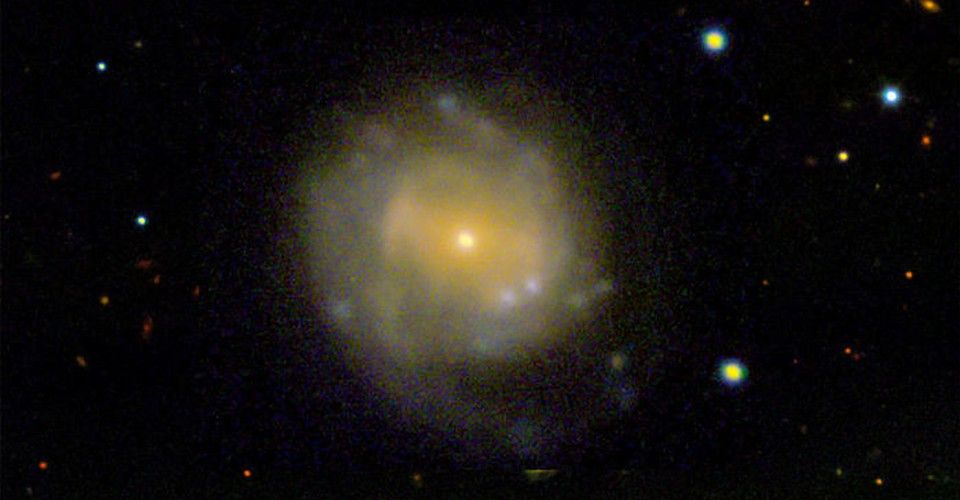Archive for the ‘space’ category: Page 800
Jan 16, 2019
Cotton Seed Sprouts on the Moon’s Far Side in Historic First
Posted by Alberto Lao in category: space
A cotton seed has sprouted in its tank on the Chinese Chang’e 4 lunar lander, which is currently on the far side of the moon.
Jan 16, 2019
NASA May Decide This Year to Land a Drone on Saturn’s Moon Titan
Posted by Alberto Lao in categories: bioengineering, drones, space
The spacecraft that have peered through the yellowish haze surrounding Saturn’s moon Titan discovered a strange, yet strangely familiar world where life could theoretically take root. Now, scientists want to return — this time buoyed by Earth’s fascination with drone technology.
That’s precisely what a team of scientists working on a proposed mission called Dragonfly want to do: combine terrestrial drone technology and instruments honed by Mars exploration to investigate the complex chemical reactions taking place on Saturn’s largest moon. Later this year, NASA will need to decide between that mission and another finalist proposal, which would collect a sample from a comet.
“At first blush, I think a lot of people think [Dragonfly] sounds like the literal meaning of incredible,” Melissa Trainer, a deputy principal investigator with the mission, told Space.com. “Not only is this an incredibly exciting concept with amazing, compelling science, but also, it is doable — it’s feasible from an engineering standpoint.” [Landing on Titan: Pictures from Huygens Probe on Saturn Moon].
Continue reading “NASA May Decide This Year to Land a Drone on Saturn’s Moon Titan” »
Jan 15, 2019
Giant leaf for mankind? China germinates first seed on moon
Posted by Genevieve Klien in category: space
Jan 15, 2019
This Quadruple Star System Is Unlike Anything We’ve Ever Seen Before
Posted by Genevieve Klien in category: space
Astronomers using the ALMA telescope have discovered an oddly tilted planet-forming disk within a double binary star system, a configuration that up until this point only existed in theory.
Quadruple star systems featuring two binary pairs are nothing unusual, nor is the discovery of a surrounding protoplanetary disk—a ring of gas and dust that gradually congeals to form planets. A star system located 146 light-years from Earth, called HD 98800, has all these things, but as new research published today in Nature Astronomy reveals, this system features an exceptionally strange protoplanetary disk.
Jan 15, 2019
China’s seeds sprout on Moon, the first time any biological matter has grown there
Posted by Michael Lance in categories: biological, space
Jan 14, 2019
Our galaxy is due for a catastrophic collision, study says
Posted by Michael Lance in category: space
(CNN) — While astronomers estimate that the Andromeda galaxy will collide with our own Milky Way galaxy 8 billion years from now, they now believe that another collision will happen even sooner.
The Large Magellanic Cloud will catastrophically collide with the Milky Way in 2 billion years, according to a study published this month in the Monthly Notices of the Royal Astronomical Society. The impact, which they believe is long overdue, has a chance of sending our solar system “hurtling through space.”
Our galaxy is orbited by smaller satellite galaxies, the kind of dance that can go on undisturbed for billions of years. Other times, things take a violent turn, and satellite galaxies can migrate toward the Milky Way until they collide and are gobbled up.
Continue reading “Our galaxy is due for a catastrophic collision, study says” »
Jan 13, 2019
Cosmonauts Could Be Growing More Veggies in Space
Posted by Genevieve Klien in categories: food, space
Watch out, Earth gardens: Space is set to become the next destination for growing fresh vegetables.
Following the successful cultivation of lettuce at the International Space Station (ISS) in 2015, beans could be the next legume to leave our planet in 2021, said a Norwegian University of Science and Technology NTNU) press release. Other salad essentials could also be cultivated in space, and they would provide cosmonauts and other intergalactic travelers with the nutrition they need to live on other planets.
“The dream of every astronaut is to be able to eat fresh food – like strawberries, cherry tomatoes or anything that’s really flavorful. Someday that will certainly be possible,” said Silje Wolff, a plant physiologist at the Centre for Interdisciplinary Research in Space (CIRiS) at NTNU, in the press release. “We envision a greenhouse with several varieties of vegetables.”
Continue reading “Cosmonauts Could Be Growing More Veggies in Space” »
Jan 13, 2019
Astronomers Glimpse a Luminous Object Born From a Star’s Death
Posted by Genevieve Klien in category: space
Jan 12, 2019
Moore’s Law, Wright’s Law, and the Countdown to Exponential Space
Posted by Daniel Berleant in categories: singularity, space
Technologies have often been observed to improve exponentially over time. In practice this often means identifying a constant known as the doubling time. Moore’s law is, classically, the empirical observation that the number of electronic components that can be put on a chip doubles every 18 to 24 months. Today it is frequently stated in terms of the number of computations available per unit of cost, a formulation promoted by Kurzweil. Different doubling times describe the rate of advancement in many technologies.
A frequently noted competitor to Moore’s law is known as Wright’s law, which has aeronautical roots. Wright’s law expresses the idea that performance of a technology—price or a quality metric—improves by a constant percentage for every doubling of the total number produced. Does exploration of outer space conform to behavior like Moore’s law or Wright’s law? Our results are broadly consistent with these laws. (More)
Tags: Exponential change, Moore's law, space

















